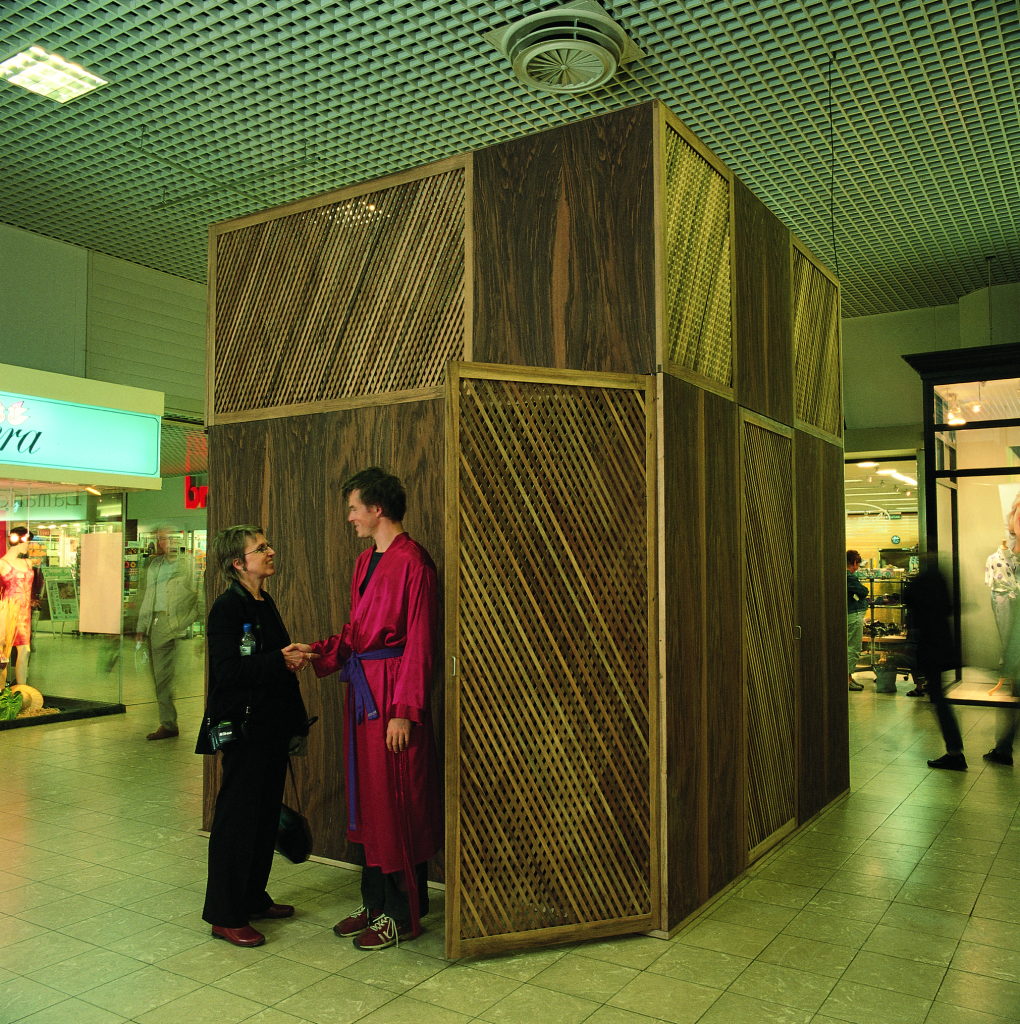Alicia Framis, Minibar, 2000-2001

Alicia Framis, Minibar, 2000-2001, 300 x 300 x 300 cm.
From the outside, it is unclear what the work Minibar (2000-2001) (fig. 1) is about or how it functions. The three entrance doors are also hardly noticeable. Behind the highest door is a staircase with an important hint: on the first step, the text 'women only' is written. Despite the fact that this indication - or warning - is not at the other entrances, it soon becomes apparent that only women are welcome here. In Minibar there is however a man, the so-called 'comforter',who is part of the work, and hiding behind one of the doors.
When women choose the highest door and go up the stairs, they enter a lounge area. Here they can spy on the comforter through a peephole. The second option also invites voyeurism; this time, the curious can observe the comforter from the ground floor. If women enter Minibar throught the third door, they choose the option to get in touch with the comforter. In addition to a (therapeutic) conversation and drink, he offers you to massage your feet. Jan Hoet, the curator of Sonsbeek 9,takes on the challenge of being a professional comforter in a silver kimono for one day. On June 26, he massages women's feet in Framis' Minibar, provided they are clean. It will be uncomfortable for most women at first, but given the queue, there was actually a lot of interest.[1]
The social aspect distinguishes Alicia Framis' project from other artworks in the mall. Without human contact, the Minibar would lose its meaning, because it is not intended as an aesthetic object but as an instrument. In addition, the Minibar is, unlike other works, intended for a specific target group. On the one hand, the work counteracts the loneliness of women and, on the other hand, it offers the opportunity to slow down. Framis also wants to question the role of women as pleasers and nurturers by reversing the roles and putting women in control.[2] This gives her work a feminist touch. Coincidence also seems to be an important element, because the encounters in Minibar are mostly spontaneous. During Sonsbeek 9, the work was placed in a public space for the first time. Before the Minibar was exhibited in museum, and visited by a different kind of public 'on appointment'. Minibar not only changes the experience of the shopping center change; thanks to the new location, the work in turn acquires a new layer of meaning.
[1] D. Korpershoek, “Hoet als vrouwenbehager in zilvergrijze kimono”, in: Trouw (28 juni 2001).
[2] Exhibition catalogue (Sonsbeek 9: LocusFocus), 2001, p. 106.
